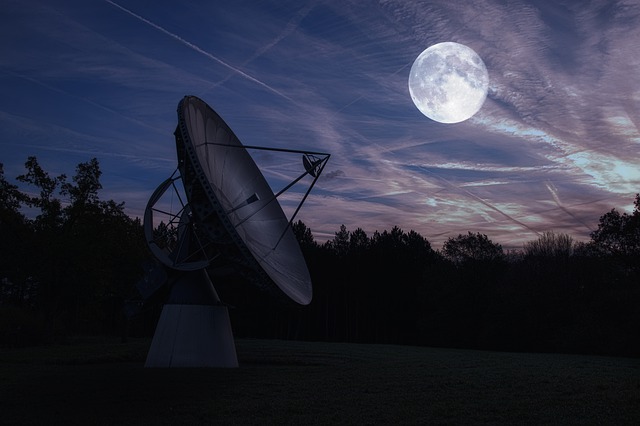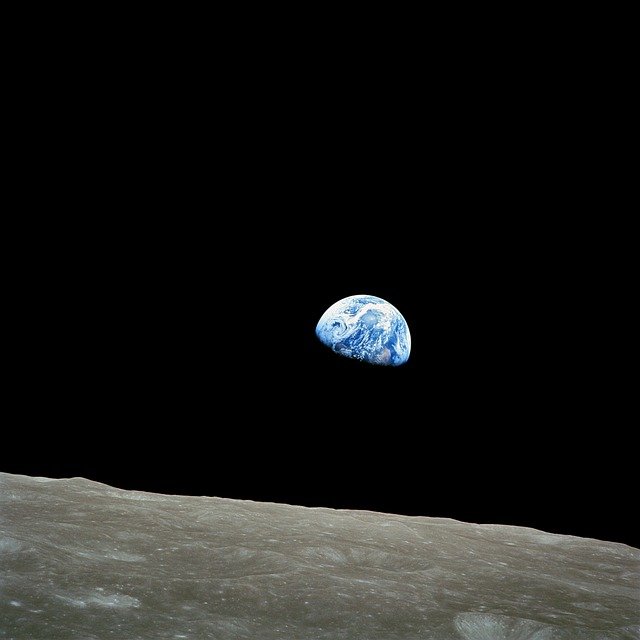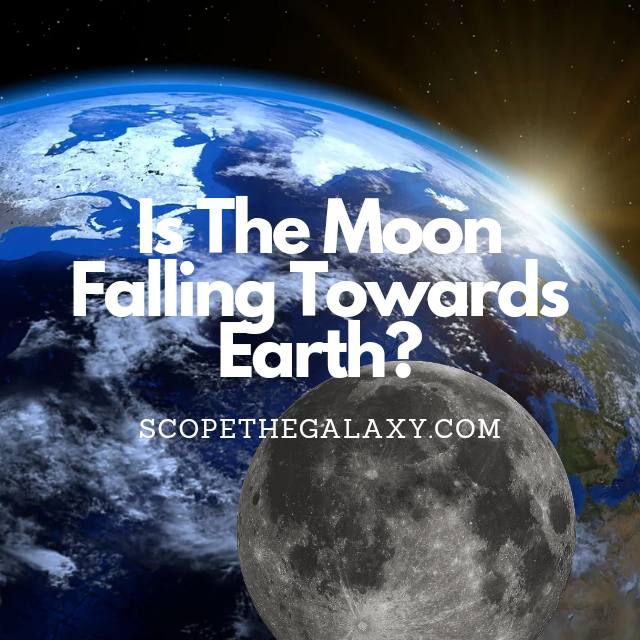*This post may contain affiliate links. This means we may make a commission if you purchase an item using one of our links*
Whether or not the Moon is “falling” towards Earth depends on your definition of the word falling. The Earth does draw the Moon closer with its gravity; at the same time, this momentum creates an orbital speed that allows the Moon to travel around the Earth in line with its natural curvature.
Discover why the Moon falls towards Earth and the forces that keep it in a stable orbit. And learn whether or not the Moon could escape its orbit and crash into Earth.
Why Is The Moon Falling Towards Earth?
Table of Contents
A number of theories explain why the Moon is falling towards Earth; two leading theories are the tidal and gravitational theories.
The tidal theory is a hypothesis that explains the gravitational interaction of the Earth and the Moon. The Earth’s gravitational pull causes bulges of water on the side of Earth nearest to the Moon and the side farthest from it. These bulges are called “tides.”
The Earth’s rotation causes a similar effect in its atmosphere, with air masses nearest to and farthest from the Moon being pulled into bulges. The tidal force exerted by these bulges is strong enough to keep objects in orbit around a larger body, such as satellites around Earth or moons around planets.
Meanwhile, the gravitational theory states that the Earth’s gravity is pulling everything in its orbit towards it, including the Moon. In this theory, the Moon is falling towards the Earth because the Earth’s gravitational pull is stronger than the Moon’s, so it pulls the Moon closer.
Why doesn’t Earth’s gravity pull the Moon into it? The reason is that the Moon continuously orbits the Earth, never staying still; without Earth’s gravity, the Moon could float out into space. This balance of velocity and distance from the Earth keeps it in orbit. If the speed of the Moon’s orbit increased, it would escape; if it slowed, it would fall to Earth.
In truth, the Moon is not “falling” towards Earth; it is moving away from Earth. The Moon moves away from Earth at the rate of 3.78 centimeters per year, but because the Earth is spinning while it orbits the Sun, it appears like the Moon is falling towards us.
Will The Moon Ever Crash Into Earth?

The Moon has been orbiting around the Earth for billions of years. The Earth and the Moon are in a stable orbit around each other, and the Moon is slowly moving away from Earth; it is improbable that they will crash into each other.
The Moon may look close to Earth, but it’s actually 384,400 km away from us. Its orbit around our planet doesn’t conform to a perfect circle and instead possesses an elliptical shape where one side is closer to Earth than the other. This means that sometimes the Moon will be closer to Earth than at other times.
When this happens, we say there has been a “lunar perigee” or “supermoon.” A lunar perigee causes tides to be higher on Earth because of its proximity to us, and it also makes it appear larger in our sky because it is closer to us too. The closer the Moon moves to Earth, the more significant its impact on our tidal forces.
Still, the chances of the Moon crashing into the Earth are almost zero. While some propose the idea that an asteroid could knock this satellite into us, the truth is that it seems unlikely. The biggest known asteroid is Ceres, but if it were to crash into the Moon, it would do little more than leave a crater.
Could The Moon Fall Out Of Orbit With Earth?

Earth holds the Moon in its orbit by the gravitational pull between the two. The Moon has a gravitational pull on Earth, but Earth has more of a gravitational pull on the Moon. The difference in these forces keeps the Moon in orbit around Earth.
The two are held together by a gravitational force caused by their respective masses. This force causes them to orbit around a common point in space called the barycenter. The Moon has always had a stable orbit around the Earth and will continue to do so for billions more.
In the past, we have seen asteroids collide with planets and moons. One such collision was the asteroid that hit the Moon and created the Moon’s dark side. Asteroids are often discussed as a potential danger to Earth but are not usually discussed as a threat to other planets in our solar system. This is because they don’t seem to be able to escape from our gravitational pull.
However, some scientists have speculated that an asteroid could theoretically knock the Moon out of orbit if it collided at just the right angle.
Summary
The balance of forces between the Earth and the Moon is perfectly aligned for a steady orbit. Still, the Moon does move a little farther from us each year, and it will likely escape one day, even though it won’t be for billions of years.
The chance of the Moon crashing into Earth is extremely low, but an asteroid impact could potentially hit the Moon and wreak havoc with its orbit.
References
What are tidal forces? How did the tidal force of Earth push the Moon away? – Quora
Could an asteroid knock the Moon out of its orbit? – Astronomy Stack Exchange

